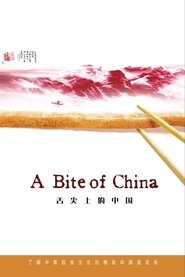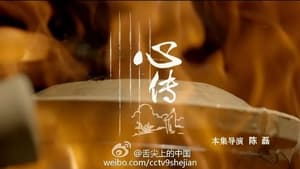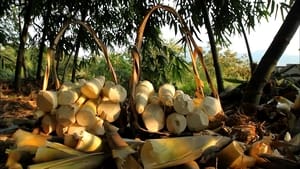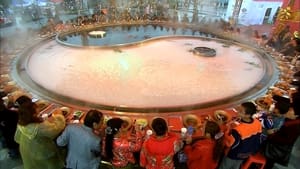A Bite of China Episode Rating Graph
May 2012 - present

May 2012 - present
7.7

| E1 | E2 | E3 | E4 | E5 | E6 | E7 | E8 | |
|---|---|---|---|---|---|---|---|---|
| S1 | ||||||||
| S2 | ||||||||
| S3 | ||||||||
| S4 |
Browse episode ratings trends for A Bite of China. Simply click on the interactive rating graph to explore the best and worst of A Bite of China's 29 episodes.

S2 Ep2
10.0
25th Apr 2014
In China, the habit of having breakfast dates back to Han Dynasty 2000 odd years ago. Since then, the majority of Chinese people have had three meals a day, which is beneficial to living and production. Although having three meals a day, has almost become a common diet pattern worldwide. In China, however, the pattern embodies various life experiences in different paces of life.

S1 Ep7
8.8
20th May 2012
The final episode explores the relationship between people and the production of food, specifically how people have adapted to living in geographically diverse regions of China. In Guizhou, the Miao, Tong and Zhuang ethnic minorities have been cultivating glutinous rice for thousands of years. Off Zhang Zi Island, divers search for sea cucumbers in Asia's largest marine pasture. In Zhejiang, hairy crabs are cultivated in vast numbers. On the Yangtze river delta, the labour intensive taro are grown. In Tibet, highland barley is processed into Tsamba. Finally in Beijing we meet a man with a rich rooftop vegetable garden in the middle of the city.

S1 Ep4
8.6
17th May 2012
This episode explores both modern and traditional ways to preserve food - from salting and drying to stewing and smoking. Learn to make kimchi with the Korean ethnic minority of north east China. In Hong Kong sweet cured meats are popular. In mountainous Hunan, discover the famous Souse fish of the Miao ethnic minority. Learn about the Hui style smelly fermented perch. Other foods include Jinhua ham, dried seaweed, dried mullet and shrimp paste.

S2 Ep3
8.5
2nd May 2014
In the old city of Beijing, within a short distance, you can have a taste of authentic Turkish food, genuine Spanish seafood paella, or prime French cuisine. People come across food from around the globe, and their taste has assimilated with that of the whole world. However, there always exists food that has not been discovered, hiding in the hills and valleys, rivers and seas, deserts and grasslands in China. These are the realms of secrets that we want to explore.

S1 Ep3
8.3
16th May 2012
This episode looks at several traditional methods of processing food to produce distinctly Chinese delicacies, in particular fermentation. Explore many different varieties of tofu in central China and several varieties of fermented dairy products in Inner Mongolia. Other food processes include alcohol in Shaoxing, preserved meats in Zhejiang and fermented vegetables in north east China.

S3 Ep1
5.3
19th Feb 2018
From pottery, bronze, iron, porcelain, Chinese cooking utensils all the way, along with the continuous advancement of civilization, the invention, discovery and application of new materials, barbecue, steaming, frying also appeared one after another, and Chinese cooking methods have taken a leap. Sometimes it is kitchen utensils that create cooking methods, and sometimes the needs of cooking methods promote the innovation of kitchen utensils and utensils. In the long history, how to make better use of ingredients and cook the best taste, from kitchen utensils to tableware, the Chinese have developed unique tool wisdom and aesthetic awareness.

S3 Ep3
6.0
21st Feb 2018
Chinese people are used to turning joys, sorrows and joys in life, weddings and funerals, and socializing into eating activities. As the so-called "reciprocity of etiquette" improves the relationship between people, the style of banquets and parties has greatly developed. People closely connect diet and social interaction, and the matter of diet is devoted to the expectation of family harmony, state governance, and world peace. Through banquets, people not only enjoy the art of food, but also enhance affinity and achieve harmony.

S3 Ep5
6.0
23rd Feb 2018
Chinese food culture has distinctive features and displays unique values. Food has been integral to our culture for thousands of years. Chinese people perceive and grasp the world around them through food. This episode will highlight the human factor in food, focusing on the relationship between people and food. Regardless of family survival or clan glory, food constitutes the foundation of our cultural existence. Only those who work hard can make delicious food. We find the true meaning of life from food.

S2 Ep1
7.0
18th Apr 2014
Most of great food is fissile spectacle resulting from combination and crash of different ingredients. If compare it with human relationship, some would be regarded as amazing perfect match. Some meet by chance but touched us deeply. Some can only make us regret not letting them meet sooner. Human activities lead to the gathering of food. The separation and reunion of food, on the other hand, also controls people. What Westerners called "destiny", is called "Yuan fen" by Chinese.

S2 Ep4
7.0
9th May 2014
There are a thousand pairs of hands with a thousand flavors. Chinese cuisine is mystic and hard to duplicate. From the countryside to the downtown area, cuisine is still inherited via teaching face to face. The wisdom from ancestors, the secret from family, the tips from mentorship, the understanding from gourmet. Every moment of gourmet is created attentively generation by generation.

S1 Ep1
7.6
14th May 2012
This episode explores the rich bounty of food that is nature's gift to the Chinese people. Elf ear mushrooms gathered near Shangri-La on the Tibetan plateau, bamboo shoots from Zhejiang and Guangxi, traditional salt production and Nuodeng hams in Yunnan, lotus roots from Hubei and Henan, ice fishing in northern Heilongjiang, and finally trawling in the South China Sea.

S1 Ep2
7.6
15th May 2012
This episode explores the staple foods that comprise the base of the Chinese diet. Examples are shown of the five traditional grains of China: rice, wheat, broomcorn millet, millet, and beans. Uses for all of the grains are also shown, from sticky rice cakes to noodles, dumplings and breads. It also explores the cultural divide between the southern preference for rice and the northern love of wheat.

S1 Ep3
8.3
16th May 2012
This episode looks at several traditional methods of processing food to produce distinctly Chinese delicacies, in particular fermentation. Explore many different varieties of tofu in central China and several varieties of fermented dairy products in Inner Mongolia. Other food processes include alcohol in Shaoxing, preserved meats in Zhejiang and fermented vegetables in north east China.

S1 Ep4
8.6
17th May 2012
This episode explores both modern and traditional ways to preserve food - from salting and drying to stewing and smoking. Learn to make kimchi with the Korean ethnic minority of north east China. In Hong Kong sweet cured meats are popular. In mountainous Hunan, discover the famous Souse fish of the Miao ethnic minority. Learn about the Hui style smelly fermented perch. Other foods include Jinhua ham, dried seaweed, dried mullet and shrimp paste.

S1 Ep5
8.0
18th May 2012
This episode looks at the various cooking traditions peculiar to the Chinese. In the Tibetan village of Nixi, handmade black pottery pots are the favoured form of cooking. In the Guangdong town of Shunde, Ouyang Guangye cooks a traditional country banquet, including a whole steamed pig. In Yangzhou, Chinese chefs demonstrate their knife skills. In Hunan we visit a Chinese cooking academy and the home of one of the teachers. In Hong Kong, artist Liang Yihu runs a social club where she collects stories and recipes from elderly Hong Kong residents.

S1 Ep6
8.1
19th May 2012
This episode examines the flavours that dominate Chinese cuisine. Sweet, salty, spicy, sour and bitter. In Guangdong we see the traditional production of sea salt. In Shanxi we see the traditional production of vinegar. In Sichuan, the chilli and Sichuan pepper vie for supremacy. Foods featured include sweet onion pancakes, sweet preserved duck, Wuxi style sweet pork ribs, Macau style tangerine peel duck, salt water chicken, fish aroma pork strips, broad bean chilli paste, Sichuan hotpot, fishball and seaweed soup.

S1 Ep7
8.8
20th May 2012
The final episode explores the relationship between people and the production of food, specifically how people have adapted to living in geographically diverse regions of China. In Guizhou, the Miao, Tong and Zhuang ethnic minorities have been cultivating glutinous rice for thousands of years. Off Zhang Zi Island, divers search for sea cucumbers in Asia's largest marine pasture. In Zhejiang, hairy crabs are cultivated in vast numbers. On the Yangtze river delta, the labour intensive taro are grown. In Tibet, highland barley is processed into Tsamba. Finally in Beijing we meet a man with a rich rooftop vegetable garden in the middle of the city.
Loading...
The first episode of A Bite of China aired on May 14, 2012.
The last episode of A Bite of China aired on February 09, 2025.
There are 29 episodes of A Bite of China.
There are 4 seasons of A Bite of China.
Yes.
A Bite of China is set to return for future episodes.